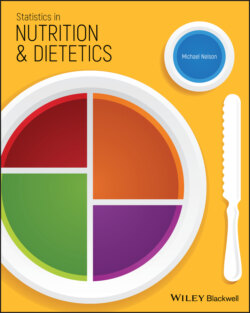Читать книгу Statistics in Nutrition and Dietetics - Michael Nelson - Страница 27
TIP
ОглавлениеYour first attempts at formulating hypotheses may not be very good. Always discuss your ideas with fellow students or researchers, or your tutor, or your friendly neighbourhood statistician. Then be prepared to make changes until your hypothesis is a clear statement of what you believe to be true. It takes practice – and don’t think you should be able to do it on your own, or get it right first time. The best research is collaborative, and developing a clear hypothesis is a group activity.
We can test a hypothesis using both inductive and deductive logic. Inductive logic says that if we can demonstrate that something is true in a particular individual or group, we might argue that it is true generally in the population from which the individual or group was drawn. The evidence will always be relatively weak, however, and the truth of the hypothesis hard to test. Because we started with the individual or group, rather than the population, we are less certain that the person or group that we studied is representative of the population with similar characteristics. Generalizability remains an issue.
Deductive logic requires us to draw a sample from a defined population. It argues that if the sample in which we carry out our measurements can be shown to be representative of the population, then we can generalize our findings from our sample to the population as a whole. This is a much more powerful model for testing hypotheses.
As we shall see, these distinctions become important when we consider the generalizability of our findings and how we go about testing our hypothesis.
